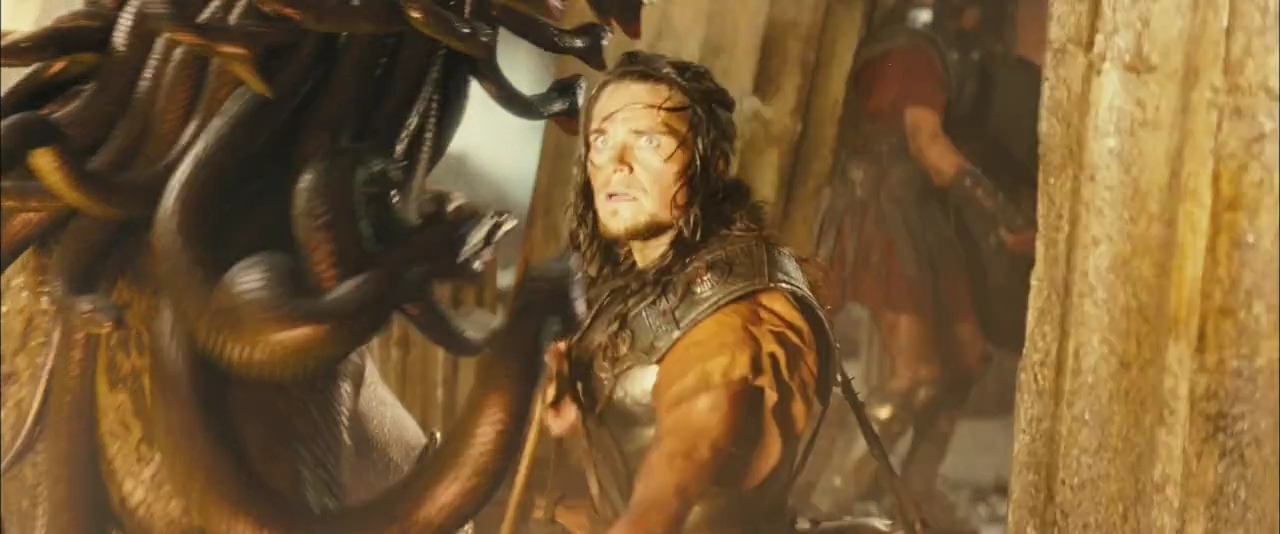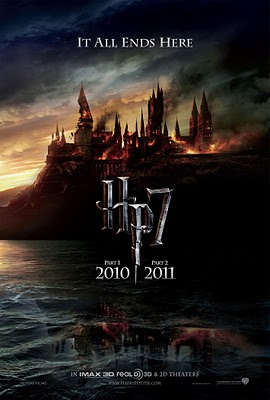With summer halfway over and Comic Con in the books, it’s time to take another look at everyone’s favorite subject: 3-D films. Nearly every film panel brought up the reasons why its film was or wasn’t in more than two dimensions, so when Nick Allen at the Daily Telegraph suggested that 3-D cinema is already declining, the taboo topic deserved further discussion.
In 2009, we saw the start of the so-called 3-D revolution, with successful animated films such as Coraline and Up being loved by critics and blossoming into hits at the box-office, especially Up. There were also live action efforts, namely from the horror genre, in the form of critically derided films My Bloody Valentine 3D and The Final Destination, both of which were financially successful with the bonus of having low production costs. That brings us to Avatar, which as we all know has become the most successful film of all-time.
![]() Even though Avatar grossed $2.7 billion worldwide, when it matched Titanic’s record, a paradox emerged because fewer people had actually gone to see Avatar because of both inflation and the fact that 3-D films cost more.
Even though Avatar grossed $2.7 billion worldwide, when it matched Titanic’s record, a paradox emerged because fewer people had actually gone to see Avatar because of both inflation and the fact that 3-D films cost more.
This year, Alice in Wonderland was also a success, becoming only the sixth film to break the $1 billion mark worldwide and the fifth highest-grossing film of all time. These two successes in a row have led to a number of films being lined up for 3-D releases, including and certainly not limited to Harry Potter and Deadly Hallows Part I and Part II, Thor, Green Lantern, Captain America: The First Avenger, The Green Hornet, The Chronicles of Narnia: The Voyage of the Dawn Treader, Pirates of the Caribbean: On Stranger Tides, the third “Transformers” film … the list is long.
3-D films have also had big supporters such as Steven Spielberg and Peter Jackson as well as studios such as Warner Brothers and Disney; there is a lot faith in the technology. Some classic films such as Toy Story, Toy Story 2 and The Nightmare Before Christmas have been converted to 3D and Titanic will even be converted for a re-release.
But lately there has been a backlash toward the extra dimension. Audiences for 3-D films are starting to decline in America: 71 percent of Americans who went to see Avatar on opening weekend saw it in 3D, compared to 68 percent seeing How to Train Your Dragon in 3D, 61 percent for Shrek Forever After and all the way down to 45 percent for Despicable Me. There are two possible reasons for this. The first is that 3-D films are more expensive, so audiences are being more careful with their money and more selective with their film choices. The second is audience fatigue, with 3D flooding cinemas and consequently dulling its impact.
Some 3-D films have also met serious criticism. Clash of the Titans was the first example, with Warner Brothers rushing through 3-D conversion, a deicision viewed as pointless because the film was not designed for 3D. The conversion was forced on director Louis Leterrier, who was against using it on his film. Some audiences took this as an omen that 3D was not the future, but it was undoubtedly the sign that studios were ready to ram it down our throats. Paramount and Nickolodeon Films’ The Last Airbender was met with even harsher criticisms for both 3-D effects and the quality of the film overall. Roger Ebert said The Last Airbender conversion ”looked like it was filmed with a dirty sheet over the lens” and that it was an excuse to charge more money. These poorly converted films have led to audiences seeing through the hype and might well account for the decrease in 3-D ticket sales.
Respected British critic Mark Kermode has also been very critical of 3D. He noted that 3-D films lose around 30 percent of their color compared to their 2-D counterparts. Acclaimed director of Inception, Christopher Nolan, has said that 3-D cameras do not often capture the same amount of quality that film does.
 The recent backlash has resulted in a new marketing strategy for some films. Resident Evil: Afterlife states in its trailer that it was filmed using the same camera technology that James Cameron used on Avatar, which implies that it will offer a higher-quality 3-D experience. Drive Angry advertises in its 30-second teaser that it was also shot in 3D. But these are cheaper B-Movies that more of a niche market and do not have as much mass appeal as Avatar or Clash of the Titans.
The recent backlash has resulted in a new marketing strategy for some films. Resident Evil: Afterlife states in its trailer that it was filmed using the same camera technology that James Cameron used on Avatar, which implies that it will offer a higher-quality 3-D experience. Drive Angry advertises in its 30-second teaser that it was also shot in 3D. But these are cheaper B-Movies that more of a niche market and do not have as much mass appeal as Avatar or Clash of the Titans.
While Avatar was shot in 3D and became a major success, it was one of the most expensive films ever, with a budget of $237 million. 3-D technology also limits what a director can psychically do during filming, thereby similar films are going to be few and far between. Audiences are savvy enough to know the different between quality 3-D and 3-D conversions and studios are only going to trust a project like Avatar to a historically successful director with a strong vision.
On the other side of the coin, some directors have been against using 3D in their films. Nolan was against making Inception in 3-D, opting instead to use IMAX. Nolan is a very independent-minded director and will not be forced into anything unless it would improve his film. Many directors feel this way, but not everyone has the popularity and sway of Nolan or other acclaimed directors.
Director Jon Favreau thought about letting Iron Man 2 go through the conversion process, but ultimately decided against it because he feared it would weaken the film’s special effects. He too opted only for IMAX screenings. Favreau also announced at Comic Con last weekend that his upcoming Western/sci-fi action film Cowboys & Aliens would be shown in 2-D only, in part to capture the feel of a true Western.
If you look at the receipts for these recent major releases, Iron Man 2 is one of the biggest grossing films of 2010 thus far with $615 million worldwide. Inception is also making good business just a couple weeks into its run, earning $62 million in its domestic opening weekend and more than $200 million worldwide in two weeks.
Many upcoming 3-D films are animated films or big franchise films (such as Iron Man 2) that can appeal to families. But if cinemas are flooded with expensive 3-D ticket prices, families will be inclined to stay home more often and avoiding paying $60 or more for four tickets. When they do treat themselves, it will most likely benefit a few films based on quality reviews or word of mouth about the 3-D effects; audiences are smarter than some studios give credit for.
Audiences have shown that they are more willing to pay for a quality overall experience, which was partly why The Dark Knight was a success. The same goes for most Pixar films, because character development and story are the most important factors in a film, regardless of special effects. Even films such as Nolan’s Batman movies, the Bourne series and the new Bond films were more impressive because they avoided using CGI and opted for maximum stunt work, giving the action a realistic feel that CGI and 3-D have yet to truly replicate.
As for the future of the medium, there will be a time lag with 2011 offering an enormous slate of 3-D films. After a few others such as the Spider-Man reboot in 2012, 3D – or at least conversion – should die down. Every film that begins production from here on out will be able to evaluate if filming in 3D is the right choice for the film. We can only hope they choose wisely.